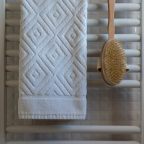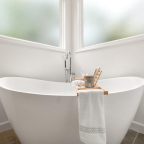
Feng Shui - What is it really all about?
Ever since I began studying Feng Shui back in the early 90s, I noticed that there seems to be a great deal of misinformation and ignorance about it. Although many articles have already been written on the subject, some people still think Feng Shui is about superstition, decorating a building with Chinese ornaments, ‘impractical mumbo jumbo’ and only relevant to Chinese culture. Over the years, it has been commercially exploited, with the sale of so-called ‘lucky’ trinkets, and this has given it a somewhat shallow reputation. However, this is a small and tarnished fraction of the full picture and is not the reality experienced by people who engage with authentic Feng Shui. To believe that Feng Shui should only be practised by the Chinese is rather like saying pizza only tastes good to Italians and yoga is only beneficial to Indians.
Feng Shui (pronounced ‘Fung Schway') literally translates to ‘wind water', which reflects the way that life force energy (‘ki’, ‘chi’ or ‘qi’) moves to and around a building or place. The art of Feng Shui seeks to create harmony and balance between buildings, the environment, and the people who live or work there. It’s about making a place look and feel ‘right’, by making full use of the beneficial aspects and reducing the negative influences in our homes and work places. Many people who have engaged with Feng Shui have reported a favourable effect on quality of life, health, relationships, and the ability to succeed and experience good fortune. It can also help to sell a house and successfully design a new building.
Traditionally, like Chinese medicine, it was practised preventatively, but in the West, just as most people only seek health advice when they become ill, a Feng Shui consultation is commonly brought in as a last resort when people are struggling with their health, finances or relationships. However, it would be far more prudent to seek advice at the planning stages of buildings and towns, and at various points through life, to ensure that we bring out the best potential support from the places where we live and work.
Subconsciously, we all practise Feng Shui in our daily lives but often it wouldn’t occur to people to call it Feng Shui! Even those keen to say that they think Feng Shui is a ‘load of rubbish’ and that it’s irrelevant to their lives will walk into a building and respond to how comfortable or uncomfortable it feels - that is experiencing the effects of Feng Shui. How we choose where to sit in a restaurant or which house we want to live in - how we perceive a place according to our senses - is Feng Shui in operation.
Feng Shui is not simply a placebo effect. I have witnessed those who do not believe that it could possibly benefit them later say to me that "maybe it’s a coincidence, but ever since we had our Feng Shui visit, life here has changed for the better." I have also received many reports of people not knowing that the property had been transformed with Space Clearing*, and yet they comment that the place "feels better, lighter and even larger".
Feng Shui consultants take the analysis of a building to a very deep level. They study what is known as the ‘earth, human and heaven’ aspects of a building, each of these having a yin and yang component. Yin and yang is a dynamic which represents the interplay of contrasts that bring a place to life: movement and stillness, open and closed, light and dark, high and low, soft and hard materials, warm and cool colours and so on. In fact the way a consultant works is a balance between the logical analysis and calculations of the left brain, and intuition and imagination of the right brain.
The following influences form the basis of what may be included in a Feng Shui Consultation:
1. Earth - the physical environment:
a) Form – Exterior: the visible landscape and location analysed on varying scales; surrounding views, garden, neighbouring buildings, roads, trees and fences; the shape and position of the house; sitting and facing direction of the building; how energy reaches the entrance.
Interior: layout of rooms, position of doors and windows; energy flow and containment; best situations for beds and seating areas, design and furnishing
b) Formless - connection with the beauty and life-force of nature; influence of earth energies; electromagnetic fields and microwaves (from ovens, Wi-Fi & cordless phones).
2. Human - the people who use the building
a) Conscious - needs, concerns, aspirations, relationships, culture, lifestyle, sex, age, life stage and spiritual beliefs. Influence of neighbours.
b) Unconscious – astrological influences upon the inhabitants using methods such as ‘Ming Gua/Bazhai’* and 9 Star Qi*. The residual energy of previous occupiers of the building,
3. Heaven: the Cosmos:
a) tangible - how the building is affected by sunlight, shade and weather
b) intangible - connecting with the spirit of a place; calibration of space and time using methods like ‘Flying Stars’*; divination eg I Ching*
The five elements and their relationships with each other (whereby each element feeds, reduces or controls another) are also used to influence the energy of a building:
1. Wood - green tones, images of trees, upright plants, and tall, thin shapes suggesting growth, rising energy and optimism
2. Fire - bright red/orange tones, images of the sun, candles, and stars or triangular shapes, suggesting illumination, activity, fulfilment and recognition
3. Earth – earthy tones, images of mountains, rocks, crystals and low rectangular shapes suggesting stillness, gathering, support and nurturing.
4. Metal - white and metallic shades, images of lakes, metal sculptures, circles and arches, suggesting organisation, solidity and leadership
5. Water - blue and black shades, images of moving water, water features, wavy patterns, suggesting movement, flow and progress
A good consultant will analyse the various layers of methodology to reveal the most poignant issues and changes required for this specific building and client at this time. When studying the abstract concepts and ideals, they should always come back to the practical situation and see if their ideas work in reality, otherwise it is simply not good Feng Shui. They need to create mutual resonance and a ‘feel good’ factor whereby people connect with their office and love it, and a house truly becomes home. They have to communicate effectively with their client, either verbally in a presentation or with a written report of their findings and recommendations. It is preferable if the client implements the changes themselves, since their heartfelt intentions have a part to play in the transformation of their home.
If we chose one hundred Feng Shui consultants to give their recommendations for a property, there are likely to be some similarities but also quite possibly radical differences in their methods and advice. This is because they will have their own way of working depending on their personal attributes, style, experience and who they have trained with and been influenced by.
Most consultants use a combination of classical Feng Shui methods or systems that are modern Western interpretations of these. There are other related practices that may be included in a consultation such as architecture, interior design, astrology, dowsing*, earth healing*, divination, clutter clearing*, Space Clearing* and healthy home advice*.
For more information about Feng Shui and the work I do, please visit my website www.firehorsefengshui.co.uk or contact me, Sue Holmes, on 07786 291967, on Twitter at http://www.twitter.com/thehomehealer or Facebook at http://www.facebook.com/TheHomehealer
Terms used in this article:
* Space Clearing - a technique that clears away negative residual energies from a building, and fills them with fresh new potential.
* Ming Gua/Bazhai – a method that reveals one’s compatibility with a property and favourable locations and directions according to one’s date of birth and the orientation of the building with the compass directions.
* 9 Star qi Astrology - an ancient Japanese form of astrology that is very compatible with Feng Shui due to its number system.
* Flying Stars – being in the right place at the right time - a system of using numbers as a symbolic language that reveal the hidden potentials within a building for wealth and health. A chart is drawn up using the date the house was built and the compass direction it faces, and this is then interpreted by the consultant.
* I Ching - or ‘Book of Changes’ is a method of divination and thought to be the oldest book in the world, written by Fu Hsi, the legendary ruler of China in the 3rd millennium BC. This is the origin of Feng Shui.
* Dowsing - a technique that uses a tool like rods or a pendulum as a way of finding out information that may not be detected with the five senses eg locating water or earth energy lines.
* Earth healing - using crystals, earth acupuncture and other healing tools, placed on specific points on the earth to harmonise lines of geopathic stress that may be caused by for example, the building of roads, houses, tree-felling, quarries and mines.
* Healthy home advice seeks to assist people to make informed choices about EMFs, microwaves and chemical-free products within the home.
* Clutter clearing - removing physical items from your home/office that are not truly loved, useful or tidy.



















